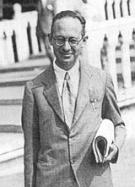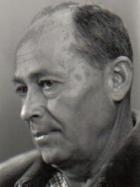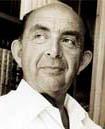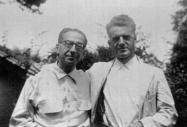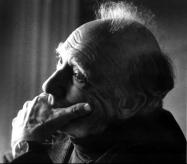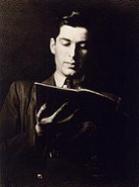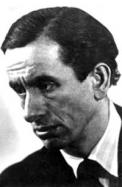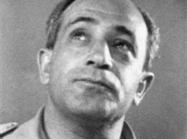(203 results found)
Mario Castelnuovo-Tedesco
… Mario Castelnuovo-Tedesco received his formal musical education at the Istituto Musicale Cherubini in Florence , with a focus of piano performance. He received a degree in composition from …
David Zehavi
… the family returned to Tel Aviv. Zehavi did not study music in an orderly manner due to lack of means. His older sister, Leah Goldis, pushed him to get a musical education and playing the violin. But Zehavi preferred to play the piano. He began studying with the pianist Miriam Levit, and …
Sasha Argov
… At the young age of three and a half Argov began to study piano with his mother, who was a music teacher. Although Argov dabbled in composition as a young boy, he never studied music or composition formally. As a young adult he worked …

Isadore Freed
… States and settled in Philadelphia , PA. Freed studied music formally at the University of Pennsylvania, where he … of 18. In 1923, Freed spent five months in Berlin studying piano with Josef Weiss. Freed made his compositional debut … Philadelphia . The program included a Sonata for Violin and Piano, a Suite for Viola and Piano, his first String …
Heinrich Schalit
… As a composer, Schalit wrote orchestral, chamber, and piano music, as well as songs. He used Hebrew poetry for some of his compositions, and composed Jewish liturgical music. Sources: Nulman, Macy. 'Schalit, Heinrich.' Concise …
Julius Chajes
… Julius Chajes (b. Lwow, 1910 - d. Detroit, 1985) studied piano under Richard Robert, Julius Isserlis, Mr. and Mrs. … Hugo Kauder. At the age of 15, Chajes performed his piano concerto Romantic Fantasy with the Vienna Symphony … appointed head of the piano department at the Beit L'viyim Music Academy of Tel Aviv. In 1934, a farewell recital in …
Gideon Klein
… At the age of twelve, Klein moved to Prague to study music and liberal arts at the Jirasek Gymnasium. While in Prague, he supplemented his formal studies with private piano lessons with teacher Ruzena Kurzova. In 1938, he enrolled at the Master School in Prague, studying piano and composition under Professor Vilém Kurz. That same …
Hans Krása
… born November 30, 1899 in Prague . Krása began taking piano lessons at the school of Theresie Wallerstein at the … spent their summer vacations. Hans studied at the German Music Academy in Prague , after which he accepted a position … received. In 1926, he composed Five Songs for Voice and Piano and then six years later in 1932, the cantata Die Erde …
Rafael Schächter
… War I, Schächter moved to Brno, where he began his formal musical studies. He continued his studies at the Prague … in composition and conducting, and at the Master School, in piano. After graduating, Schächter formed a successful … of Figaro and The Magic Flute . Schächter was a popular piano accompanist in Terezín; he performed in many recitals …
Mordekhai Zeira
… born in Kiev, Russia, in 1905. Although he was born to a musical family, his musical education consisted mostly of a handful of piano lessons, which he received as a reward for listening … show. In the Theater, Zeira worked as an actor, composer, piano accompanier, stage worker, decorator, and …



